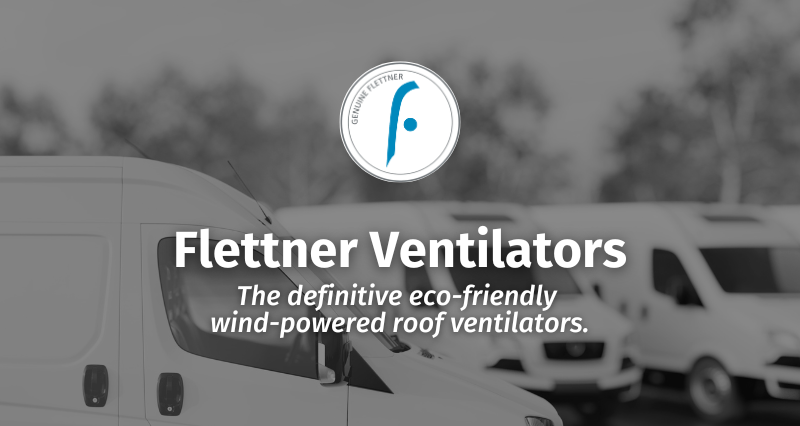Commercial Van Ventilation and Why Air Conditioning Isn’t Enough
Posted by Austin Hardware on Apr 3rd 2024
 Rotary ventilators are widely used in large fleets of commercial vans. They’re generally specified for three reasons:
Rotary ventilators are widely used in large fleets of commercial vans. They’re generally specified for three reasons:
The first is to extract fumes or stale air from vans for driver and passenger comfort, health, and safety. This applies especially to vans carrying gas cylinders, inflammable liquids, chemicals, or other potentially harmful volatile substances.
Another is to minimize condensation within vehicles. Cooled air inside a vehicle mixed with warmer, humid external air or vice versa can result in severe condensation, poor visibility, mold growth, and musty smells. Vehicles are especially prone to condensation:
- At the start of a workday
- When making frequent stops
- That are frequently stationary
- That store wet equipment inside
Adequate ventilation significantly reduces the damage to equipment and goods inside the vehicle and the deterioration of the vehicle’s interior through water build-up and mold growth.
Finally, ventilators are installed to reduce the temperature inside vehicles during summer months foroperator comfort and to protect equipment and ambient or perishable goods. The daytime interior temperature of unventilated vans, even in typically temperate climates during the summer months, can reach 100ºF or higher in the sunshine when the van is stationary.
Even work vans and other commercial vehicles outfitted with air conditioning can require additional means of ventilation because air conditioning has limitations. Vehicles should have a roof vent, and adding a floor vent helps achieve full airflow. Absent the floor vent, air movement throughout the vehicle is significantly reduced.
Rotary ventilators actively and efficiently extract stale air from within a vehicle, replacing it with fresh, cleaner air from outside. Air conditioning systems do not expel potentially hazardous fumes from a vehicle as quickly or effectively.
Air conditioning units also significantly increase fuel consumption. Rotary ventilators use no energy source other than the wind and are 100% environmentally friendly. As such, they are increasingly used in electric and other low-carbon technology vehicle development. At more temperate times of the year, rotary ventilators can be a cost-effective substitute for air conditioning.


